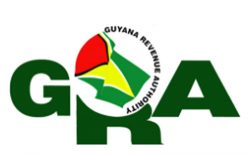In today’s column I report on the results of modeled projections of the Guyana Government Take ratio. In the online Energy Glossary this Take is succinctly defined as “the total amount of revenue that the Government receives from production. This amount depends on taxes, royalties and Government participation.”
I shall report on ten separate measurements that have been s published by five independent sources. These sources are: 1] Open Oil; 2] Rystad Energy; 3] Wood Mackenzie; 4] Inter-American Development Bank, IADB; and 5] University of Trinidad and Tobago, U of T & T.
The Government Take projections arrived at by the five bodies listed above are reviewed in the order displayed there, in what follows next.
Open Oil
Open Oil is a German-based “social enterprise” pursuing objectives other than maximization of private profit [see Investopedia definition]. As its name suggests, Open Oil is aimed at bringing informed public scrutiny to international oil companies, IOCs operating in poor countries. I have devoted eight consecutive columns over the period May 6 to June 24, 2018 towards reviewing Open Oil’s early modeling of projected Guyana Government Take. This exercise is based on the first producing well, Liza 1 in the Stabroek Block of Guyana’s newly emerging oil and gas sector.
Upfront I wish to make it very clear that I do not intend to re-visit my earlier intervention on Open Oil. I simply note here that Open Oil has projected two Government of Guyana, GoG, Take ratios at 52 and 54 per cent, respectively for the Liza 1 Stabroek field. Further, Open Oil’s website asserts its goal is to be considered as “a leading provider of financial analysis and commercial advice on natural resource assets for public policy”.
Rystad Energy
Established in 2004, Rystad Energy is a nearly two decades old independent energy research and business intelligence company as well as sole owner of the world’s leading database for production data, engineering, financing of oil and gas at the field level. The data are framed on economic logic while being science-based. These attributes make the data essential for efficient oil and gas financing. Rystad Energy is squarely located in the field of energy, rather than confined to oil and gas. It describes itself as an Energy Knowledge House.
Its Mission Statement is cited below
Mission Statement
Putting the pieces together. Seeing the whole picture. Creating visions for the future. Guiding decisions on how to get there.
There are two reported estimates of Government Take from Rystad Energy 60 per cent in 2018 and 59 per cent earlier this year [2022].
Wood Mackenzie
Wood Makenzie was established about a century ago [1923] and its first reporting on oil and gas started five decades ago [1973]. It’s a global research and consultancy business generating analytics, business intelligence, advisory services and insights into natural resources [mining, energy, chemicals, renewables, and metals. Like Rystad Energy the company sees its role as a catalyst for transformation of the energy mix and promoter of innovation and change, The Take ratios obtained are 52 percent, from 2017, and 57 per cent, from 2020.
The recent reported measurement of Guyana Government Take made comparisons of ten frontier countries with similar characteristics; namely, Argentina, Barbados, Colombia, Guyana, Ireland, Jamaica, Mauritania, Somalia, South Africa, and Suriname. Guyana’s terms were fourth, modelled at US$40 per barrel Brent crude. Parenthetically, the data show Guyana’s fiscal terms allow investors to recover their investments faster than the average by only 0.1 years
IADB
The Infrastructure and Energy division of the IADB produced an excellent Technical Note [IDB-TN-1994] entitled. Traversing a Slippery Slope: Guyana’s Oil Opportunity in August 2020, which revealed its projection of the likely Government Take ratio. It found that “Government Take, or sometimes the average effective tax rate, AETR… equal to 51 per cent.”
U of T&T
The U of T&T modeled the Liza Field in a presentation to the Society of Petroleum Engineers, Trinidad and Tobago Section, Energy Resources Conference, in 2018. This Conference was themed Forging Ahead: Changes, Challenges & Opportunities. The Authors are K. Alleyne, L. Layne and M. Sourosh, all affiliated to the U of T&T. The Paper models the main features of ExxonMobil’s Liza Development Plan, with which readers are familiar, given how often this has been previously discussed in this series. Briefly, the Plan constitutes: 1) eight producing wells, 2) three gas injectors, and 3) six water injectors. Operations are based on a Floating Production Storage and Offloading (FPSO) vessel. The Authors simulate results over a 25 year period, in which 456 million stock tank barrels of oil (MMSTB) and 3.5 trillion cubic feet (TCF) of gas are produced. The combined total is equivalent to 1.04 billion barrels of oil equivalent.
The key results are shown in Schedule 1 below. Based on three oil prices [Brent crude] of US dollars, 50, 45, and 60, respectively, the related Take projection ratios are 51.92 per cent, 52.06 per cent, and 51.64 percent. Rounded up, the Government Take ratio is 52 per cent. Of note, the cost recovery periods for the modelling varied.
Note + = University of Trinidad and Tobago
Conclusion
Next week’s column wraps up this presentation on Guyana Government Take before moving on to consider estimated hydrocarbon resources.







